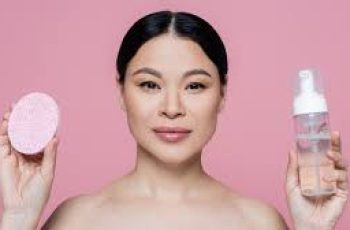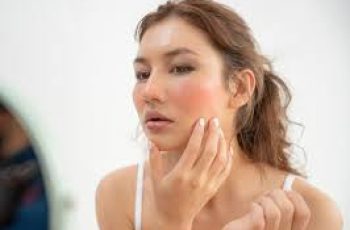
Why Your Dark Spots Haven’t Disappeared After 3 Months — And What to Do Next
If you’ve been diligently following a skincare routine for several months—especially one targeted at hyperpigmentation—and your dark spots are still visible, you’re not alone.
Many people experience persistent discoloration, even when they do everything “right.”
Understanding the underlying reasons why hyperpigmentation such as melasma or post-inflammatory dark spots linger is key to developing a more effective approach.
This guide will help you reassess your routine, introduce strategic changes, and finally take meaningful steps toward clearer, more even-toned skin.
Understanding Hyperpigmentation and Why It’s Stubborn
Hyperpigmentation is caused by excess melanin in the skin, typically triggered by inflammation, sun exposure, hormonal changes, or skin injury.
Melanin production is influenced by an enzyme called tyrosinase, which is why many treatments target this pathway. However, even the most effective products can lose their potency or stop working altogether when used continuously.
On average, most dark spots begin to fade after 12 to 16 weeks with consistent treatment.
But if you’re dealing with moderate to severe melasma or deeply embedded pigmentation, it can take significantly longer—sometimes six months or more.
What makes hyperpigmentation so tricky is that it’s often affected by a combination of external and internal factors.
Common Reasons Your Dark Spots Haven’t Faded
Here are the primary reasons dark spots persist even after months of using a skin care regimen:
Ongoing Sun Exposure: Even incidental sunlight can trigger melanin production. This includes indoor light sources, such as blue light from screens or UVA rays through windows.
Heat Exposure: Heat—even without direct sunlight—can stimulate melanocytes, especially in melasma-prone skin. This includes activities like cooking, hot showers, or exercise.
Hormonal Factors: Fluctuations in estrogen or progesterone levels can exacerbate melasma. Birth control pills, pregnancy, or even hormonal imbalances can be contributors.
Plateauing Effect of Tyrosinase Inhibitors: Products that block melanin production, such as hydroquinone or kojic acid, can become less effective after prolonged use.
After about 4 months, the skin can build resistance or become sensitized, leading to stalled progress.
Improper Skin Barrier Function: A compromised skin barrier due to over-exfoliation or harsh products can cause inflammation, making pigmentation worse.
Next Steps: Adjusting Your Routine for Long-Term Success
If your dark spots are still visible after 3 months, it’s time to reassess your skincare approach. Here’s a detailed roadmap to help you get better results:
1. Alternate Between “Treatment” and “Maintenance” Regimens
When you’re targeting stubborn dark spots, especially melasma, alternating between an aggressive treatment routine and a gentle maintenance routine is key.
This cycling helps prevent resistance to active ingredients and gives your skin time to recover, reducing inflammation.
Treatment Phase (8–12 weeks): Use potent skin lighteners like hydroquinone, kojic acid, arbutin, and azelaic acid.
Maintenance Phase (2–4 weeks): Temporarily stop using tyrosinase inhibitors and instead use antioxidants, calming agents, and gentle brighteners like vitamin C, niacinamide, and cysteamine.
2. Take a 4-Week “Holiday” from Tyrosinase Inhibitors
Tyrosinase inhibitors stop working after about 4 continuous months of use. To reset their effectiveness, take a 2 to 4-week break. During this time, use non-tyrosinase-inhibiting products to support your skin:
Substitute ingredients include:
Vitamin C (L-ascorbic acid): A powerful antioxidant and brightener.
Niacinamide: Reduces inflammation and prevents pigment transfer.
Cysteamine: A sulfur-based compound that effectively lightens dark spots.
Tranexamic Acid: Can be applied topically or taken orally under medical supervision for melasma.
3. Optimize Your Routine Step-by-Step
Here’s how your skincare regimen might look during the maintenance phase:
Cleanser – Use a gentle, non-stripping cleanser.
Vitamin C Serum – Brightens and protects against environmental damage.
Eye Cream – Optional. If you prefer to limit steps, replace it with Vitamin C.
Brightening Serum (without tyrosinase inhibitors) – Use formulas containing ingredients like niacinamide or cysteamine.
Moisturizer with Unsaturated Fatty Acids – Products like Zerafite Skin Brightening Barrier Cream support the skin barrier and enhance the efficacy of active ingredients.
Sunscreen (Daytime) or Retinoid (Nighttime) – Crucial for long-term pigmentation control.
4. Add an Exfoliator Once or Twice a Week
Exfoliating the skin helps slough off dead skin cells, allowing active ingredients to penetrate more effectively and promoting cell turnover.
However, over-exfoliating can worsen hyperpigmentation by causing irritation. Opt for mild chemical exfoliants like:
Lactic acid
Mandelic acid
Polyhydroxy acids (PHAs)
Avoid harsh scrubs, especially if you have sensitive or melasma-prone skin.
5. Use the Right Moisturizer
A well-formulated moisturizer is not just about hydration—it plays a key role in calming inflammation and supporting the effectiveness of brightening agents. A good option is:
Zerafite Skin Brightening Barrier Cream:
Contains artemisia capillaris, known for anti-inflammatory properties.
Rich in unsaturated fatty acids to repair the skin barrier.
Can be used in both treatment and maintenance phases as it’s free of tyrosinase inhibitors.
6. Reintroduce Tyrosinase Inhibitors After the Break
After your 2–4-week break, return to your original dark-spot-fading regimen with renewed efficacy. Be consistent with:
Hydroquinone (short-term only)
Kojic acid
Licorice root extract
Azelaic acid
Arbutin
Consistency is more important than intensity—apply the right ingredients daily, not aggressively.
7. Use Vitamin C as a Core Step in Your Routine
During and after your tyrosinase inhibitor holiday, Vitamin C remains a staple. Here’s why:
Neutralizes free radicals
Boosts collagen production
Reduces pigment formation
Recommended Vitamin C Products:
Obagi-C Clarifying Serum
La Roche-Posay Vitamin C Serum
CeraVe Skin Renewing Vitamin C Serum
ISDIN Flavo-C Ultraglican Ampoules
Use it in the morning after cleansing and before moisturizing.
8. Choose Brightening Serums That Don’t Rely on Tyrosinase Inhibition
During your maintenance phase or after your dark spots have cleared, use serums that prevent pigmentation from returning without overloading the skin with active ingredients.
Top Options:
Alastin A-Luminate Brightening Serum
Defenage 8-in-1 Bioserum
Scientis Cyspera (Cysteamine)
Medature Hydro Bright Treatment
Skinceuticals Resveratrol B E
PCA Vitamin B3 Brightening Serum (Niacinamide-based)
Some of these contain minimal tyrosinase inhibitors and are suitable even during breaks.
9. Monitor for Triggers and Lifestyle Factors
Dark spots don’t only respond to topical treatments—your lifestyle matters too.
Always wear broad-spectrum SPF 30+, even indoors.
Minimize heat exposure during exercise or cooking.
Wear wide-brimmed hats and sunglasses outdoors.
Consult a healthcare provider if hormonal issues may be contributing.
10. Match Products to Your Skin Type
Using products that aren’t suited for your specific skin type can cause irritation, which may worsen hyperpigmentation.
If you’re not sure of your skin type, consider using a system like the Baumann Skin Type classification to guide product selection.
Final Thoughts: Be Patient but Strategic
Hyperpigmentation, especially melasma, is notoriously difficult to treat. It often requires an ongoing cycle of targeted treatment and careful maintenance.
Don’t be discouraged if you haven’t seen major improvement in three months—it often takes longer depending on the depth and cause of the pigmentation.
By rotating your active ingredients, protecting your skin from environmental stressors, and nurturing your skin barrier, you can begin to see noticeable improvements.
If progress remains slow, consider consulting a dermatologist or medical provider who specializes in pigmentation disorders.


